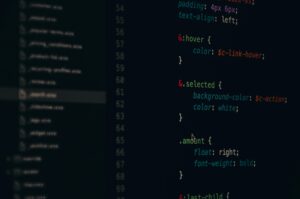Course Overview
Become a Machine Learning (ML) specialist with the Machine Learning using Python with R training program. This comprehensive course is designed to equip professionals with the skills needed to develop predictive models, analyze structured and unstructured data, and apply advanced ML algorithms in real-world scenarios. By leveraging both Python and R, participants will gain a deep understanding of data science techniques and ML applications.
Throughout this course, you will learn how to implement regression analysis, work with supervised and unsupervised learning techniques, and explore Black Box techniques such as Neural Networks and Support Vector Machines. Additionally, you will develop hands-on experience in data visualization, feature engineering, and model evaluation using industry-standard tools.
With the increasing demand for ML expertise in various industries, mastering Machine Learning using Python with R will open new career opportunities, allowing you to make data-driven decisions and drive business innovation.
Course Objectives
- Understand the core principles of Machine Learning using Python with R, including statistical modeling, feature selection, and model optimization.
- Gain proficiency in data wrangling, data cleansing, and data manipulation using Python and R.
- Master machine learning algorithms, including Black Box techniques such as Neural Networks and Support Vector Machines.
- Develop hands-on experience in building regression models, decision trees, and predictive analytics models.
- Leverage Amazon Machine Learning Services to deploy ML models efficiently.
- Enhance data visualization skills using powerful libraries such as Matplotlib, Seaborn, and ggplot2.
- Apply ML techniques in real-world scenarios through case studies and projects.
Pre-requisites
- Basic knowledge of mathematics, particularly in statistics and probability.
- Understanding of fundamental data science concepts.
- Familiarity with basic programming concepts (Python or R knowledge is beneficial but not required).
Target Audience
- Aspiring data scientists, ML engineers, and AI professionals looking to enhance their skills.
- Employees of organizations seeking to integrate machine learning solutions into their workflow.
- Managers and decision-makers with a basic understanding of programming who want to explore ML applications.
- Graduates and professionals transitioning into the field of data science and machine learning.
- Mid-level and senior executives looking to leverage ML techniques for business growth.
Course Duration
- 5 Days (35 Hours) of interactive training, including hands-on coding exercises and real-world case studies.
Course Content
Introduction to Python and R for Machine Learning
- Installation and setup of Python and R environments.
- Comparison of Python and R for machine learning applications.
- Overview of key Python and R libraries for ML, including Scikit-learn and CRAN R Packages.
Connecting and Processing Data
- Importing datasets from various sources (CSV, JSON, databases, APIs).
- Handling missing values and data inconsistencies.
- Feature engineering techniques for improving ML models.
Machine Learning Primer
- Understanding the basics of supervised and unsupervised learning.
- Overview of key ML models such as decision trees, regression, and clustering.
- Applying ML algorithms to real-world datasets.
Handling Balanced vs. Imbalanced Datasets
- Challenges of working with imbalanced datasets.
- Techniques for resampling and balancing data.
- Evaluating model performance on imbalanced datasets.
Statistics and Data Visualization
- Descriptive and inferential statistics for data analysis.
- Data visualization techniques using Tableau and Power BI.
- Interpreting graphs and statistical plots for insights.
Supervised vs. Unsupervised Learning
- Key differences and applications of supervised and unsupervised learning.
- Examples of classification and clustering techniques.
- Choosing the right ML model for a given problem.
Regression and Predictive Modeling
- Linear and logistic regression using Python and R.
- Evaluating regression models using performance metrics.
- Applying predictive modeling techniques to business problems.
Decision Trees and Neural Networks
- Understanding decision tree algorithms and random forests.
- Introduction to deep learning and neural networks.
- Implementing neural networks using TensorFlow and Keras.





